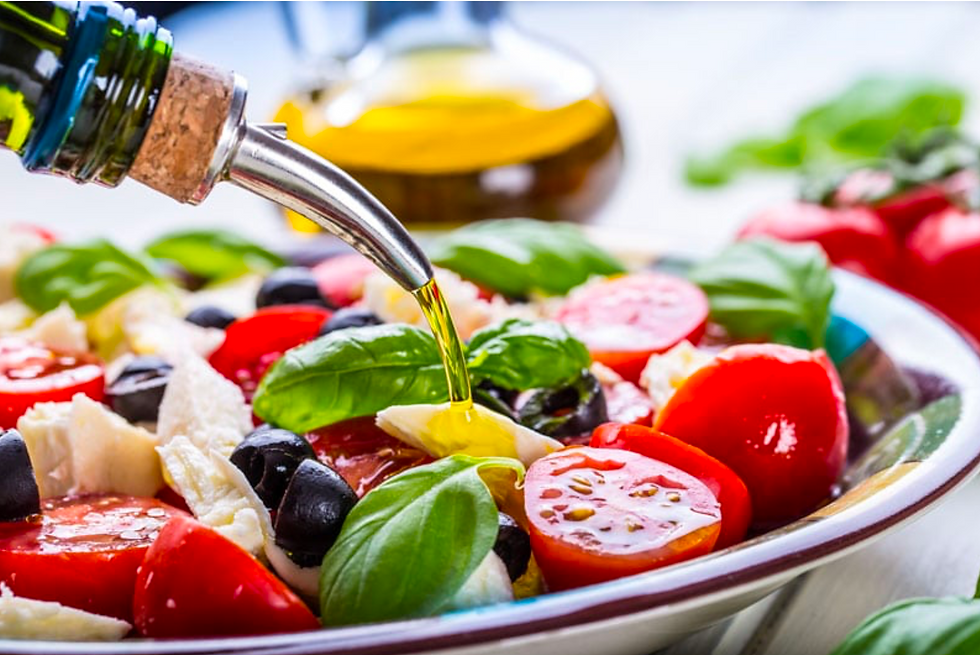Kimchi: The Harmony of Nature and Community
- Carla Sanders
- Feb 4, 2024
- 3 min read

Kimchi is a fermented vegetable dish featuring a mixture of chili, garlic, spring onion, ginger and fish sauce. This probiotic-rich food is lauded throughout its abundant history as a medicinal food known for its antioxidative and immune-boosting properties. While the most common version of kimchi, Baechu Kimchi, features white cabbage, this mixture varies from region to region depending on the naturally plentiful ingredients of the area. In Seoul, Kkakdugi Kimchi is a popular style of kimchi featuring cubed radish while Godeulppaeg Kimchi made with chrysanthemum greens is most popular in the southern Jeolla province. Learn more about different regional varieties of kimchi from the Korea Tourism Organization.
The process of making Kimchi is a seasonal practice that draws together families, friends, and entire communities. Kimchi recipes are traditionally passed down from mother-in-laws to their newly married daughter-in-laws. This tradition makes regional varieties even more unique to each family’s household and heritage. Preparation of kimchi spans all four seasons, culminating in the late Autumn to honor the year’s bounty and to prepare for the winter months ahead. In the Spring, shrimp and other fish are caught and later used to add flavor to the final dish. During Summertime, salt is cultivated for the preservation process. The standout ingredient of kimchi, the red chili peppers or “gochu,” were first planted in Korea about 2,000 years ago. Today, they are harvested in the Fall and fermented into chili paste known as “gochujang” which is used to coat the ingredients chosen to be preserved. As winter approaches, Kimjang season, or the period of time when kimchi is typically prepared and stored for the winter, commences.
When this season finally arrives, the task ahead is not easy. Communities gather together to help each other make enough kimchi to last everyone through the harsh winter. The process begins with salting the vegetables to allow the moisture to be drawn out over several hours while also imparting deep flavor. Then, the vegetables are meticulously and liberally massaged with a marinade of gochujang and aromatics. The final product is stored for about 2-3 weeks to ferment, with the flavor intensifying throughout the winter, before it is shared at the dining table.
After the laborious Kimjang season is over, families and friends get to relish their nourishing creation. Kimchi can be found amongst other traditional banchan, or side dishes, like marinated tofu, and anchovies that are served with each meal. Its spicy, fermented bite can cut through unctuous soups or be paired simply with a bowl of rice. The versatility of kimchi makes it the perfect accompaniment to a wide variety of dishes. More importantly though, kimchi can be shared.
Enjoy this video from the Korean Cultural Heritage Administration of an in depth look at the history and tradition of Kimjang season: https://www.youtube.com/watch?v=8LJSz0bHcIw
Want to try Baechu Kimchi at home? Follow along with Chef Hooni Kim to learn how to fill your plate probiotic-rich flavor: https://www.koreanculture.org/cuisine-tourism/2022/12/20/kimjang-making-and-sharing-kimchi
Danilovich N. Gochujang’s Long History In Korea. Tasting Table. Published November 5, 2022. Accessed February 27, 2023. https://www.tastingtable.com/1079309/gochujangs-long-history-in-korea/
Kwon DY, Jang DJ, Yang HJ, Chung KR. History of Korean gochu, gochujang, and kimchi. J Ethn Foods. 2014;1(1):3-7. doi:10.1016/j.jef.2014.11.003
Park KY, Kim HY, Jeong JK. Chapter 20 - Kimchi and Its Health Benefits. In: Frias J, Martinez-Villaluenga C, Peñas E, eds. Fermented Foods in Health and Disease Prevention. Academic Press; 2017:477-502. doi:10.1016/B978-0-12-802309-9.00020-0
Service (KOCIS) KC and I. Food : Korea.net : The official website of the Republic of Korea. Accessed February 27, 2023. https://www.korea.net/AboutKorea/Korean-Life/Food
Welcome to the website of the Ministry of Culture, Sports and Tourism of the Republic of Korea. Accessed February 27, 2023. http://www.mcst.go.kr/english/useful/issue.jsp
Park KY, Jeong JK, Lee YE, Daily JW. Health benefits of kimchi (Korean fermented vegetables) as a probiotic food. J Med Food. 2014;17(1):6-20. doi:10.1089/jmf.2013.3083
Kimchi : VisitKorea. Accessed February 27, 2023. https://english.visitkorea.or.kr/enu/FOD/FO_ENG_2_1.jsp
Kimjang, the Communal Act of Kimchi Making, Gains New Meaning This Year. Serious Eats. Accessed February 27, 2023.
Kimjang, Making and Sharing Kimchi - EP.01. Korean Cultural Center New York. Published December 20, 2022. Accessed
UNESCO - Kimjang, making and sharing kimchi in the Republic of Korea. Accessed February 27, 2023.



Comments